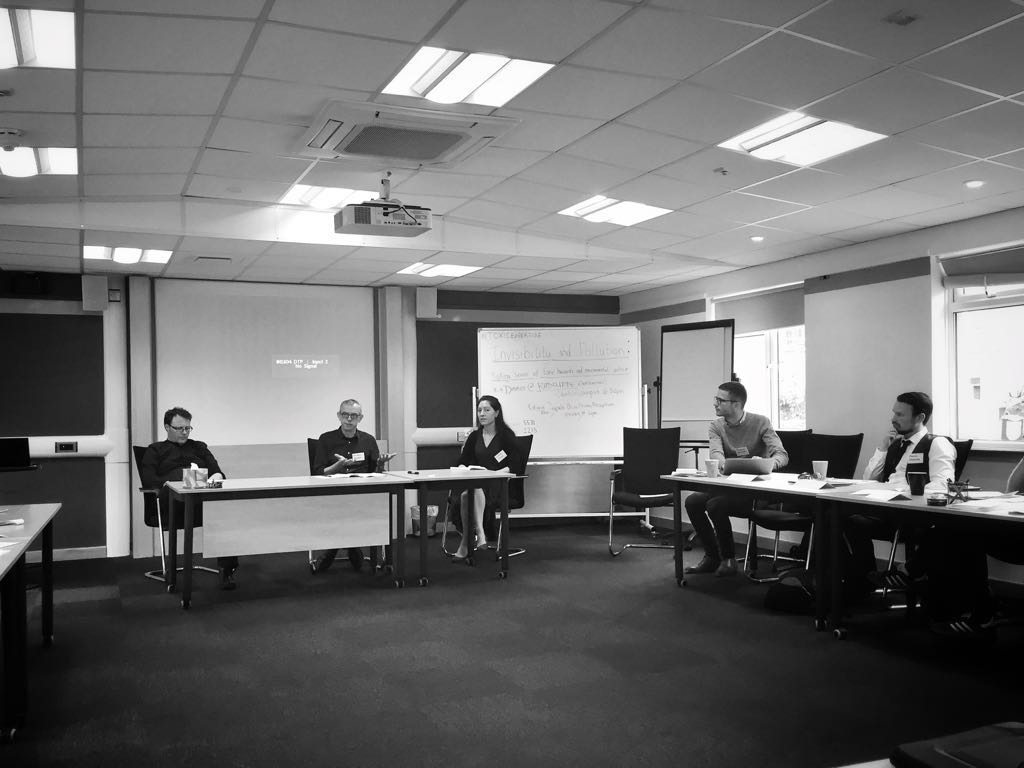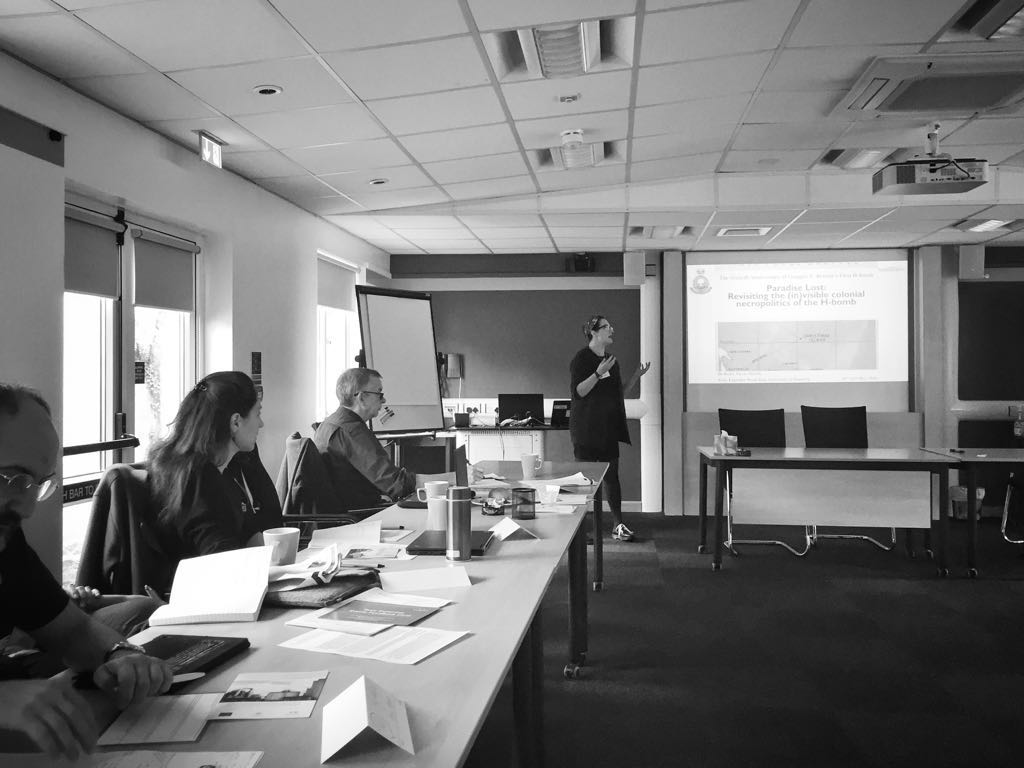An overview of the 3rd annual Toxic Expertise workshop
Dr Loretta Lou, Research Fellow in the Department of Sociology, University of Warwick
On 15-16 May 2018, the Toxic Expertise team held its third annual workshop at the Arden Conference Centre, University of Warwick. Funded by the European Research Council and the European Union’s Horizon 2020 Research and Innovation Programme, the two-day workshop brought together 14 scholars from across the U.K., the U.S.A, Canada, Europe, and Africa. Despite their differences in methodological and disciplinary approaches, all of our participants address the theme of this year’s workshop in their own unique ways.
‘In a world full of contested toxic hazards, how pollution is made visible – or rendered unknowable – is of critical concern’
This year our workshop focused on two themes: the (in)visibility of pollution and environmental justice, or the lack thereof. In a world full of contested toxic hazards, how pollution is made visible – or rendered unknowable – is of critical concern for social scientists. We are particularly interested in how pollution is made known to us through our senses, as well as cases in which toxins are undetectable through human sensory perceptions. As we know, the long-term health impacts of toxic contamination are often elusive and that making such pollution known is not only extremely difficult but also a contested social and political process. Even when affected communities can ‘sense’ or ‘measure’ the pollution surrounding them, converting that knowledge into environmental justice movements is not a straightforward matter.
Using visibility as a starting point, the speakers explored toxicity through a broad range of methods, including participant-observation, ethnography, storytelling, spatial data analysis, among others. On day one, the workshop was opened by the Toxic Expertise team, followed by two intriguing panels in the afternoon. In the first panel, Sophia Jaworski showed how aesthetics practices such as drawing can help chemically sensitive women to foster dialogues surrounding invisible environmental hazards that are otherwise difficult to capture through more traditional ethnographic methods. Continuing the (in)visbility theme, Tom Widger argued against the conventional visibility/invisibility divide through his ethnography of the debate over the aetiology of CKDu in Sri Lanka. Finally, Nick Shapiro invited us to rethink if detoxification can only be achieved by pinpointing the sources of toxicity and stamping them out, thus once again challenged the visibility/invisibility divide. In the second panel, speakers explored how toxicity and pollution are made known through the senses. Nirmal Purwar discussed walking as a way of knowing in her study of litter in the city. Likewise, Marco Armiero argued that ‘bodytelling’ or bodily narratives of contamination might be the only way to tell the story of pollution for many subaltern communities. In similar vein, Louise Rondel examined how toxicity is revealed/masked in the beauty salon industry in London.

On day two, the workshop began with Gordon Walker’s paper on nano-particulates and their implications for our understanding of risk and justice. The second paper, by Christian Nold, illustrated how low-cost sensor systems contribute to a new kind of ‘neo-environmental’ sensing. Next, Coraline Goron demonstrated how environmental information on Chinese social media is manipulated by the state. In a nutshell, all the papers in this panel highlighted the possibilities and limitations of new environmental knowledge.
After a short break, planner scholar Yasminah Beebeejaun drew on her fieldwork in the U.K. and the U.S. to examine community expertise in relation to the politics of shale gas extraction; while Kallista Bley presented a case of ‘slow violence’ in a highly productive agricultural region in the U.S.A. In the last panel, John Baeten and Becky Alexis-Martin presented two different but equally fascinating cases of toxic legacies. Using Minnesota’s Mesabi Iron Range as a case study, archaeologist and environmental historian John Baeten provided a geospatial approach to recreate an historic mining landscape over a 120-year period. Becky Alexis-Martin, who had recently returned from her fieldwork on the toxic legacies of nuclear weapons testing in the South Pacific, shared with us the racially-charged interactions between the British nuclear test veterans and the indigenous communities—brought together by what one might call ‘nostalgia tourism’.
The annual workshop concluded with a roundtable discussion exploring some of the emerging themes in the study of toxicity and environmental justice. On behalf of the Toxic Expertise team, I would like to thank all of our participants for making the workshop a success. Our team got a great deal out of it intellectually and we hope our participants felt the same as well.

Other articles in this Special Issue:
- Editorial: Toxic Visions – Photography and Pollution
- Exposing a Chemical Company
- The Red Forest: Picturing Radiation with Infrared Film
- Disposable Citizens: viewing Chernobyl through the lens of those live there
- The derelict afterlives of para-nuclear waste
- Rare Earthenware: photography, pottery, and pollution
- Graveyard of Giants: the Toxic Afterlives of Ships
- Treasure: Landscapes of the U.S. Strategic Petroleum Reserve
- Voyage on the planet: contemplating pollution with Chih Chiu
